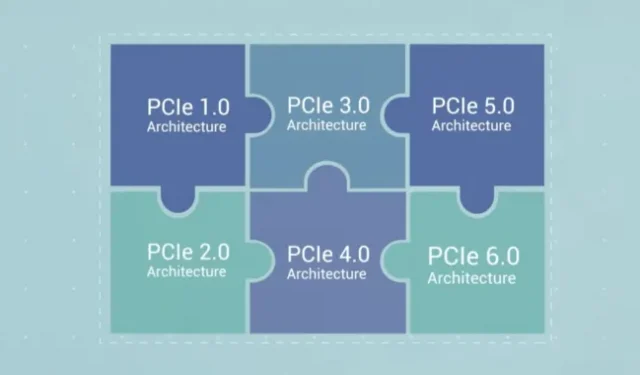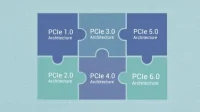The PCI Special Interest Group (PCI-SIG) has completed version 6.0 of the PCI Express standard, a communications bus that allows you to exchange data between all of your computer’s components. The new specification comes about three years after the finalization of the PCI Express 5.0 specification, and version 6.0 again doubles PCIe lane bandwidth from 32 GT/s (8 GB/s total or 4 GB/s in each direction) to 64 GT/s (16 GB/s or 8 GB/s in each direction). For a full 16-lane PCIe 6.0 link, the total throughput reaches 256 GB/s, compared to the 32 GB/s or 64 GB/s of currently common PCIe 3.0 and 4.0 links.
Like previous versions of PCIe, PCIe 6.0 will “interoperate and be backwards compatible”with all existing PCIe versions, so your PCIe 4.0 GPU or SSD will continue to work in a PCIe 6.0 slot and vice versa. PCI-SIG boasted about the specification’s longevity in a blog post by PCI-SIG board member Debendra Das Sharma: “An interconnect technology is considered successful if it can support three generations of throughput improvements spanning a decade. The PCIe architecture has far surpassed this mark.. “
For faster speeds, PCIe 6.0 uses a new type of signaling called Pulse Amplitude Modulation 4 (PAM4) that provides faster data transfer than previous Non-Return-To-Zero (NRZ) signaling due to the higher data rate. error rate. To compensate for this, PCIe 6.0 includes technologies such as forward error correction (FEC) to correct errors and cyclic redundancy check (CRC) to request retransmission of packets when errors cannot be corrected. PCI-SIG says that this combination of technologies should catch all errors without increasing connection latency.
Consumer systems are just starting to support PCI Express 5.0 – 12th Gen Intel Core processors provide 16 lanes of PCIe 5.0, and AMD plans to support PCIe 5.0 in its upcoming Zen 4 architecture and Ryzen 7000 series processors. For now, PCIe 4.0 remains the most commonly used version specifications for high performance SSDs and current generation GPUs, and most budget PCIe SSDs still use PCI Express 3.0 which is more widely supported by older systems and is still fast enough for most things. PCI-SIG acknowledges in its PCIe 6.0 FAQthat the bandwidth of the new specification is not necessary for most consumer applications, instead offering it as an upgrade for data centers and AI and machine learning systems.
PCI-SIG expects PCIe 6.0 products to hit the market within 12 to 18 months.


